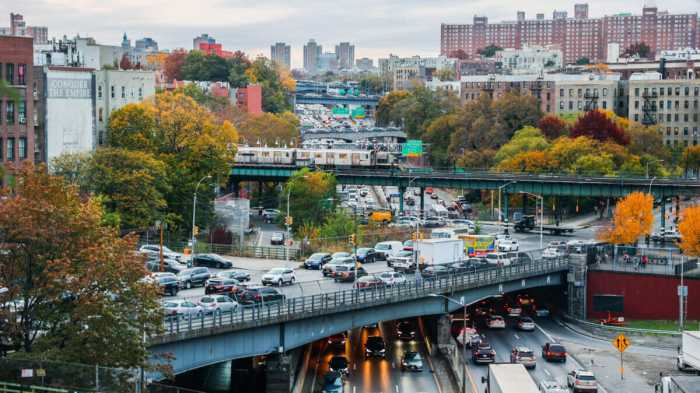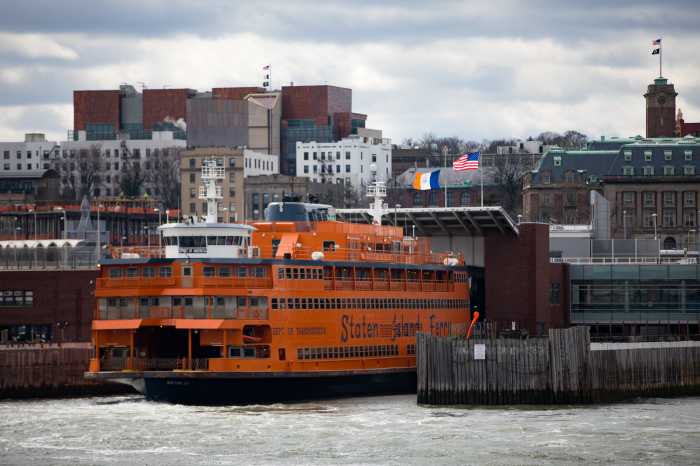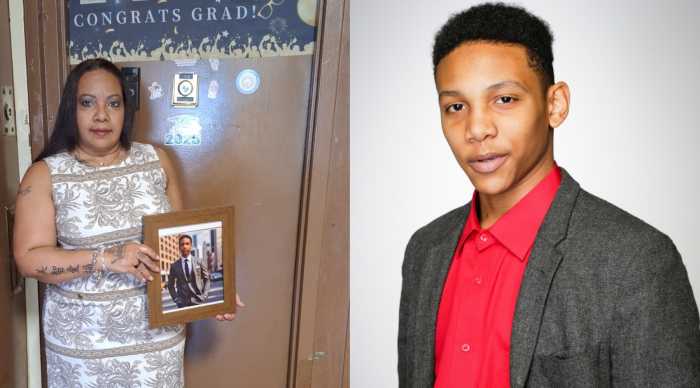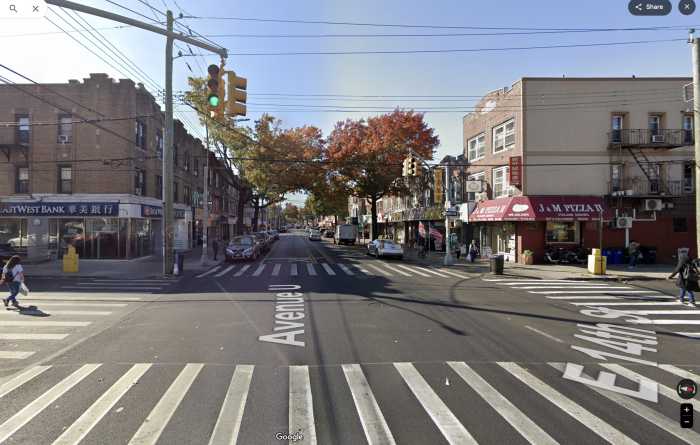
It’s been a roller-coaster year for transit in New York City.
2017 brought subway trains under Second Avenue and new ferries to the harbor. A summer subway derailment injured dozens; track fires and crippling delays marked a tipping point for steadily declining subway service and widened the political divide between City Hall and Albany.
While new leadership at the MTA searches for ideas to improve transit, we’ve spoken to New Yorkers in each borough this holiday season, who — after living through a brutal year in commuting — had plenty of suggestions.
QUEENS
Congestion pricing
Peter Beadle, of Forest Hills, said he’d like to see the city implement a form of congestion pricing — preferably a plan outlined several years ago called Move New York. The plan would toll all East River bridges and traffic as it crosses into midtown Manhattan, while also lowering the tolls on crossings in car-dependent outer boroughs.
“The top of my wish list would be the implementation of the Move NY plan, a congestion pricing plan that rationalizes East River crossing tolls and raises millions of dollars to repair and modernize out subways and buses,” Beadle said.
Gov. Andrew Cuomo is expected to unveil a congestion pricing proposal in his State of the State address next month, though it remains unclear how much his plan — if any of it — will borrow from Move New York.
Ferry service extension
A year after New York City Ferry service launched, Rockaway resident Joe Hartigan said he’d like to see local service in his neighborhood expanded to reach Kennedy Airport.
“By extending the ferry route to Kennedy Airport, Rockaway could have ferry service on the (half) hour and an additional stop at 69th Street without any additional subsidy. The ferry to the airport would not be subsidized and a separate charge,” Hartigan said.
More north-south bus service
Bay Terrace resident Warren Schreiber said he’d like to have more north-to-south local bus service in his area of Queens and the implementation of what’s known as a Freedom Ticket — the concept of charging lower LIRR fares for riders using the rail network within city limits.
“We have three bus lines and I can take any of those bus lines and go to Flushing,” Schreiber said. “I can’t go anyplace else. I would love to have routes that would go north and south. If I wanted to go from here (Bay Terrace) to Queens Borough Hall, it involves a bus and two subways. That’s almost two hours.
“I would really love to see options available where we can travel from one end of the borough to the other — we don’t have a subway here.”
BROOKLYN
New subway app
Ada Lin, 24, an assistant teacher from Sheepshead Bay, said “there’s a lot to fix” at the MTA. Chief among those problems: the agency needs to do a better job of communicating with riders during service disruptions — preferably through a new, rider-friendly app.
“Alternate routes don’t work. Finding a different way is really hard,” Lin said. “The maps don’t really help if you don’t know which way to go. Maybe create an app that could find alternative routes quickly to help us navigate through the system.”
MTA chairman Joe Lhota agrees and has said that the agency is in the process of developing a new wayfinding app.
Better L train shutdown plan
The MTA and city Department of Transportation released their plan to move hundreds of thousands of L train riders when the line shuts down for 15 months in 2019. But many residents don’t feel like the plan goes far enough to prevent commuting bedlam — including Williamsburg architect Jordan MacTavish.
“I’m very worried about the L train shutdown,” MacTavish said. “They’ve put in place different resources for that, but I don’t think that’s going to be enough. Increase the frequency of the trains. The L train is actually very predictable,” he said, adding that that needs to be the case for “all other lines.”
New train cars
Corey Lun, 27, a plumber from Sheepshead Bay, said he’d like new train cars — especially to replace the rickety cars on his line.
“I’m going to pick two things: some of the trains need new trains, some of them are really old like the B train,” he said, adding they make weird sounds as they move through the tunnels. “They should lower the fare to $2. I feel like they’re just taking advantage. Everyone has different situations going on. It’s hard out there for people.”
The model of the cars on the B line went into service in the late 1980s. While not the oldest of the MTA’s fleet, the two train car models running on the line do break down 11 percent more frequently than the average of all subway lines.
THE BRONX
More dedicated space for cyclists
Kelvin Fanas, a 22-year-old bike courier from the Concourse area of the Bronx, said he’d want a network of underground tunnels for cyclists looking to get around the city. While an underground cycling superhighway might be a bit costly, Fanas said he’s also in favor of more dedicated bikeways — like the Hudson River Greenway — that give cyclists complete separation from vehicular traffic. Even parking-protected bike lanes are too dangerous, Fanas said, because of the risk of getting hit by a car door swinging open.
“It’s crazy — every second there’s something in your way,” said Fanas, on cycling in Manhattan. “I stay away from other bikes and bike lanes. I just act like I’m a car — that’s the only way to survive. Just demand your lane and you’ll be OK.”
Better weekend subway service
Zecia Duran, 26, a Hostos Community College student from Longwood, wants ramped up weekend subway service. The 25-minute commute to her job at a dental office across the borough could take double or triple the time, she said, thanks to service changes or planned work.
“Usually trains are running express and I have to use another station — and then you spend so much time waiting I end up being late for work or school,” she said.
New subway PA system
Stanley White, 62, of the Concourse area, said he’s tired of missing subway service changes because he can’t understand the public address system. As a rider of the 2, 4 and 5 lines, he’d like a complete revamp of the system.
“The service is always going to be lousy — at least let us understand what you’re saying when you’re telling us that we’re being delayed,” White said. “You can never understand a word that they’re saying. All you can hear is ‘squawk squawk squawk’ and you’re sitting there trying to figure out what the hell they just said.
“The thing is so muffled that you end up staying on your train anyhow because you don’t know what they’re saying,” he said, adding that “it takes being more than an experienced traveler to understand the PA system in the trains.”
STATEN ISLAND
North Shore waterfront bikeway
Rose Uscianowski, a Stapleton resident and senior ambassador at the advocacy group Transportation Alternatives, said she’d like a waterfront bikeway built along Staten Island’s North Shore — spanning from the Bayonne Bridge to the Verrazano Bridge.
The bikeway would serve both recreational and transportation uses, according to Uscianowski, who envisions the path as a complement to the bike share service that the city hopes to bring to the borough next year. The bikeway would also run past the Staten Island Ferry.
“Right now, you technically have bike lanes on Richmond Terrace and you have sharrows [shared lanes] on Bay Street, but in reality they’re not safe, they’re not protected, they’re not welcoming and they also don’t give waterfront access, which is this beautiful natural advantage that you have being on the island. But when you can’t access the waterfront you’re not taking advantage of what you have,” Uscianowski said.
“If we want bike share to not only come to Staten Island but to actually be successful here and get utilized, we don’t just need more bicycle infrastructure,” she continued. “We need safe and welcoming bicycle infrastructure.”
Better traffic management
Carlos Cancela, of Clifton, wishes for better traffic management in the borough — preferably through the deployment of more crossing guards at busy and dangerous intersections. Cancela, 50, said that traffic through the borough is already brutal and that big projects like the expansion of the Staten Island Mall and the development of Empire Outlets and New York Wheel would only add to the congestion.
“We could use more crossing guards on Hylan Boulevard — that’s a big disaster,” Cancela said. “They’re rebuilding the mall and I wonder what happens here when all the tourists pack in . . . It’s starting to look slowly more like New Jersey here with all the crashes that I’ve seen.”
Safe Staten Island Ferry bike parking
St. George cabbie Mitchell Vaillant suggested a small but important change: installing safe and secure bicycle parking at the St. George Terminal, down near where cyclists board the boat — an area managed by security guards.
The current parking area on the Richmond Terrace side of the ferry terminal is in a desolate area where bikes and parts are often stolen, Vaillant said.
“They strip bikes there all the time,” he said. “The one place where you could have a bike rack is down there where we walk our bikes in. There are guards there, a parking lot — but no bike parking. To me, it’s obvious that’s the safest place and there’s space for a rack.”
MANHATTAN
Second Avenue subway extension
If Alex Sanchez of East Harlem had a magic wand, the planned expansion of the Second Avenue subway to 125th Street would be completed in 2018. Though for now he’d be content with more service on the 6 line running through his neighborhood.
Sanchez, 38, an operating room technician, said that even though he moved to East Harlem from Brownsville, Brooklyn, his nearly hourlong commute to midtown barely changed because of how crowded the 6 is during rush hours.
“I have to wait for two trains to go by before I could even get in,” Sanchez said. “I’m a little claustrophobic, so I hate it. I need to make sure I get on a train that won’t be too crowded to even get off at my stop.”
Sanchez called the planed second phase of the Second Avenue subway line “great” but was ultimately skeptical that he’d see the line come into service.
“It took them almost a hundred years to get to 96th; I don’t know how long it will take them to get to 125th,” he said.
As officials look to secure full funding for the project, which would bring the Second Avenue line into East Harlem, with three new stops running up to 125th Street, the MTA currently plans to have early design work done in 2018.
Better bus service
Bus service was so slow and unreliable for Debbie Clark, 48, that she decided to just start walking from her home in Harlem to her job as a keyboard specialist in the Mott Haven area of the Bronx, over the Third Avenue Bridge. To improve service, Clark said she’d like to see more dedicated bus lanes in the city and additional long, articulated buses that can carry more passengers.
“After a certain time, the trains and buses just seem to slow down when the peak starts,” said Clark. “By the time I get to work between 8 and 8:30 a.m., I see the traffic backed up and I know I will be late if I don’t just walk.”
Actual enforcement of bike lane blockers
Blocking a bicycle lane in New York City could pack a $115 summons. But based on all the cars Mario Castro sees clogging the lanes, there’s room for more enforcement. Castro, a retail worker from Hamilton Heights, said he’d like to see more police tickets for offenders and, in general, more respect for the city’s bike lanes.
“We really have bike lanes but drivers don’t really care about them. There’s always construction or cars blocking the bike lane,” said Castro, 25, who was out riding his mountain bike during a frigid winter evening recently. “Broadway is an obstacle course.”





































